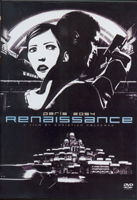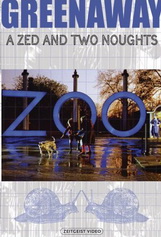Arch
443/646: Architecture and Film
Fall
2009: Course Home Page
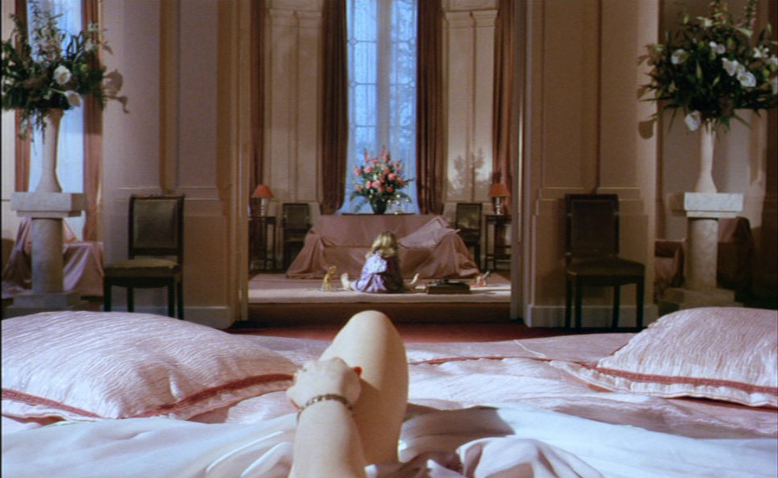
|
"manipulated realities"
|
Wednesdays 10:00 to 2:00, Cambridge, Main
Floor Lecture Hall ARC 1001
Please note: CLASS TIMES AND ROOMS HAVE CHANGED! The seminar will run from 10 to 11:30 in ARC 2026. We will take a 30 minute break and reconvene at 12 noon in the Main Lecture Hall to view the film. The exception to this is the week of September 28. As I was planning on showing two films while I was in Washington, D.C. at a conference, and they don't "fit" in the time slot, the consensus was to view Paris Je T'aime on Monday the 28th at 7pm in the Theatre. Lisbon Story will be shown on Wednesday the 30th at noon. There will not be a seminar on Wednesday the 30th. The questions for the first four films will be posted on Sunday evening, September 27. Thanks!
Course Description:
This course explores the relationship between Architecture and the development
of early and modern films. Students will look at the source and portrayal
of architectural expression in film: precedents for imagery, its relationship
to the development of early modern architecture, and its vision of the
urban future.
The theme for this term is "manipulated realities". In many senses, film is always presenting a version of reality. Even a documentary film is framed in a certain way in order to direct its viewers to see the issues in the same light as the director intended.
Realities, and those associated with the architecture in the film, are manipulated in a multitude of ways. In early films, physical sets were created that mocked up a version of urban space. Later on detailed scale models were used to create urban futures that bore some resemblance to the current world. The most obvious way to manipulate space in current film might be through the use of special effects and CG to modify the setting as filmed. In other cases the lighting and environment are changed in order to make the architecture and urban spaces read in a certain way. One can take an ordinary scene set in Paris or Chicago and use lighting, atmospheric effects and music in such a way as to evoke fear or terror. Animation can also be used to create architectural and urban environments that while evoking memories of the familiar, might also through the ease of the medium, transform those settings to create different readings of the space. The films selected for this term are extremely varied in terms of their topics and type of film medium, but all have been chosen to highlight a range of tools that can be applied to the use of architecture in film to frame the narrative in very specific ways.
|
|
|
We
will be using FinalCutPro to make our films. The films will
be required to manipulate their environments to attempt to modify the
direct use of architectural environments in the films to reflect the
theme of the term. How the effects are achieved is completely up to
you.
NOTE: There is a possibility that a selection of the films from this course will be used for the UnSilent Night evening in Cambridge. In these installations, the films are projected on buildings or large temporary screens throughout Cambridge. I will try to have more information on this later in the term. It is being coordinated with Jeff Lederer. You do not have to design your film to this format. Only G rated films will be used. You would also be welcome to do more than one film if you wanted to experiment with the medium.
The undergraduate
and graduate work will also require the creation of a website using
Dreamweaver. Masters student will prepare more "advanced" text
intensive research related websites. Tutorials in both of these softwares
will be provided. The website will create distinct topics related to
the theme of "faking it". A reflective piece will be published
in a similar mode to the "Zero Gravity
Environments" (2005), "Dystopia" (2006) and "How
Uncanny"
(2007) and "It's a Very Very Mad World" (2008).
Pedagogic
Objectives:
The course is
intended to develop a critical perspective of the use of architecture in
film. Students will learn to examine both the medium of film and the form
and style of architecture as they relates to the development of both film
media and culture. Students will engage in research to understand the choices
and expression of architecture used in film, as well as the relationship
between the idea of the future city and its relationship to both built
and natural environments.
Completion
Requirements:
The course
will be run in a seminar format. Each week we will view a film,
discuss its relevance to architecture, culture, environments, and
the perception of all three. The discussions will take
place in a “for credit” mode and include a digital submission of an answer to an assigned question. Attendance is mandatory.
Two missed classes will constitute failure of the course. Discussions to be effective require all students to be present. Students must also submit their web site and completed film.
IMPORTANT: IF YOU MISS SEEING A FILM
Many of these films are not in Musagetes. If you miss seeing a film in class, please arrange to see it. I am not lending out my personal copies.
LINK TO THE WEB ASSIGNMENT!
last updated
Tuesday, November 24, 2009 2:52 PM
|
| |
Schedule of Classes and Films:
Please note: With the exception of the first two classes, the class
will begin at 10 a.m. with responses to the previous week's film. The film
listed for the week will start around 11:45a.m. "Visitors" will
always be welcome to the class. |
| Date |
Film Name and Details |
Reviews and Links |
| THE CITY |
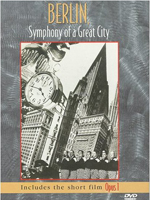
September 16 |
Berlin: Symphony of a Great City 1927 | 72 minutes |
This is a visual symphony in five movements celebrating the Berlin of 1927: the people, the place, the everyday details of life on the streets. Director Walter Ruttman, an experimental filmmaker, approached cinema in similar ways to his Russian contemporary Dziga Vertoz, mixing documentary, abstract, and expressionist modes for a nonnarrative style that captured the life of his countrymen. But where Vertov mixed his observations with examples of the communist dream in action, Ruttman re-creates documentary as, in his own words, "a melody of pictures."
|
http://www.imdb.com/title/tt0017668/
|
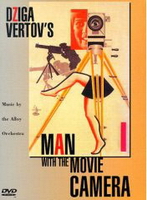 Second half of class
Second half of class
September 16
|
The Man With the Movie Camera 1929 | 68 minutes | Dziga Vertov
A cameraman travels around a city with
a camera slung over his shoulder, documenting urban life with dazzling
inventiveness. This playful film is at once a documentary
of a day in the life of the Soviet Union, a documentary of the filming
of said documentary, and a depiction of an audience watching the film.
Even the editing of the film is documented. We often see the cameraman
who is purportedly making the film, but we rarely, if ever, see any
of the footage he seems to be in the act of shooting!
Both of these documentary films use filming devices to manipulate the truth of the story that they tell about their respective cities. |
http://www.imagesjournal.com/issue05/
http://www.nottingham.ac.uk/film/journal/
http://en.wikipedia.org/wiki/Man_with_the_
http://www.25hrs.org/vertov.htm
http://www.sensesofcinema.com/contents/
...more man with the movie camera links to come... |
| |
|
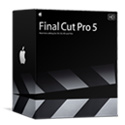
September 23
|
FinalCutPro Tutorial
Use of this software is not mandatory to produce
your movies but it will be "supported". The video lab at the
school is set up with computers for exclusive FCP use by students. Students
may also use iMovie as the regular lab computers are all equipped with
iMovie/iDVD.
Mike Taylor will give a demo on "rotoscoping". He used this technique for his film last year.
Please note that if you are using a new AVCHD camera, FCP will not support your footage. You can only edit AVCHD material on a new Intel MacPro with Final Cut Express - or use a PC.
extra notes |
Excellent tutorial:
http://journalism.berkeley.edu/multimedia/tutorials/finalcut/
These also look like great help sites:
http://users.design.ucla.edu/
http://www.kenstone.net/fcp_homepage/
http://www.atomiclearning.com/finalcutprox.shtml
http://www.sjmclib.umn.edu/viscomm/finalcutpro/
http://www.lafcpug.org/tutorials.html
|
| |
|
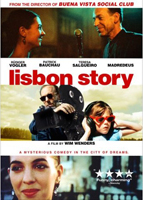
September 30 |
The Lisbon Story 1995 | 104 minutes | Wim Wenders
A German filmmaker summons his sound recorder friend to join him in Lisbon. When the latter arrives, his friend has disappeared, leaving a few cans of silent footage. The sound man will wander aimlessly through the streets of Lisbon recording sounds of the old city to match the images left by his friend.
|
http://www.imdb.com/title/tt0110361/
http://www.wim-wenders.com/movies/movies_spec/
http://www.deep-focus.com/flicker/lisbonst.html
http://archive.sensesofcinema.com/contents/
|
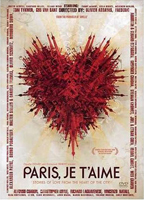
Monday, September 28 @ 7pm in the Main Lecture Hall
sorry to have to move this film but our alotted time in the lecture hall has been shortened to 2 hours and 30 minutes now, from noon to 2:30 and this film does not fit.
discussion questions
|
Paris Je t'aime 2006 | 120 minutes | various directors
Paris, je t'aime is about the plurality of cinema in one mythic location: Paris, the City of Love. Twenty filmmakers will bring their own personal touch, underlining the wide variety of styles, genres, encounters and the various atmospheres and lifestyles that prevail in the neighborhoods of Paris. Each director has been given five minutes of freedom, and we, as producers, carry the responsibility of weaving a single narrative unit out of those twenty moments. The 20 films will not appear in the order of the arrondissements, from one to twenty, but rather, in a pertinent narrative order, initially unknown to the audience. |
http://www.imdb.com/title/tt0401711/
http://en.wikipedia.org/wiki/Paris,_je_t%27aime
http://www.firstlookstudios.com/pjt/ |
| DISCRETE SPACES |
| |
|
|
The Shining 1980 | 142 minutes | Stanley Kubrick
Stanley Kubrick's The Shining is less an adaptation of Stephen King's bestselling horror novel than a complete reimagining of it from the inside out.
The film uses camera angles and traditional cinematography to transform actual settings into the architecture of horror. |
http://www.imdb.com/title/tt0081505/
http://en.wikipedia.org/wiki/The_Shining_%28film%29
http://en.wikipedia.org/wiki/The_Shining_%28novel%29
http://kubrickfilms.warnerbros.com/video_detail/shining/
http://www.drummerman.net/shining/
|
| |
|
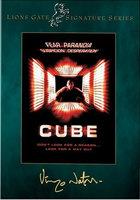
October 14 |
Cube 1997 | 90 min | Vincenzo Natali
A handful of strangers wake up inside a bizarre maze, having been spirited there during the night. They quickly learn that they have to navigate their way through a series of chambers if they have any hope of escape, but the problem is that there are lethal traps awaiting if they choose their route unwisely. Having established some imaginative and grisly punishments in store for the hostages, cowriter and director Vincenzo Natali turns his attention to the characters, for whom being trapped amplifies their best and worst qualities.
This film uses a very minimalist set to create a complex plot. |
http://www.imdb.com/title/tt0123755/
http://en.wikipedia.org/wiki/Cube_%28film%29
http://en.wikipedia.org/wiki/Cube_%28film_series%29 |
| |
|
 . .
Wednesday, November 25 @ 7pm
|
Dreamweaver Tutorial
All registered students are required to submit a website as part of this
course. This tutorial will address the use of Dreamweaver to create your
site. If you already are familiar with the software you need not attend the tutorial.
ALL STUDENTS IN THE SCHOOL THAT MIGHT BE INTERESTED IN LEARNING THE SOFTWARE ARE WELCOME TO ATTEND.
|
Introduction to Dreamweaver
Tutorial link
Excellent tutorial:
http://multimedia.journalism.berkeley.edu/tutorials/webdesign/ |
| THE FUTURE |
| |
|
|
Solaris 1972 |169 minutes | Andrei Tarkovsky
The Russian answer
to 2001, and very nearly as memorable a movie. The legendary Russian director
Andrei Tarkovsky made this extremely deliberate science-fiction epic, an
adaptation of a novel by Stanislaw Lem. The story follows a cosmonaut (Donatas
Banionis) on an eerie trip to a planet where haunting memories can take physical
form. Its bare outline makes it sound like a routine space-flight picture,
an elongated Twilight Zone episode; but the further into its mysteries we
travel, the less familiar anything seems.
This is NOT the recent film of the same name starring
George Clooney.
|
http://www.ragnatelamagazine.com/
http://www.nationmaster.com/
http://www.imdb.com/title/
http://www.zone-sf.com/solaris.html
http://film.guardian.co.uk/features/
http://homevideo.about.com/
http://www.dvdtalk.com/
http://www.acs.ucalgary.ca/ |
| |
|
|
Equilibrium 2002 | 107 minutes | Kurt Wimmer
In a futuristic world, a strict regime has eliminated war by suppressing emotions: books, art and music are strictly forbidden and feeling is a crime punishable by death. Cleric John Preston (Bale) is a top ranking government agent responsible for destroying those who resist the rules. Whe he misses a dose of Prozium, a mind-altering drug that hinders emotion, Preston, who has been trained to enforce the strict laws of the new regime, suddenly becomes the only person capable of overthrowing it. |
http://www.imdb.com/title/tt0238380/
http://en.wikipedia.org/wiki/Equilibrium_(film)
http://www.moviebodycounts.com/charts.htm |
| |
|
|
Renaissance 2006 | 105 minutes | Christian Volckman
In 2054, Paris is a labyrinth where all movement is monitored and
recorded. Casting a shadow over everything is the city's largest company,
Avalon, which insinuates itself into evry aspect of contemporary life
to sell its primary export, youth and beauty.
This French film was only shown briefly in the US. It features the
extensive use of motion capture as the basis for the animation of the
people in the film as well as the layering of recognizable architecture
of Paris with that of 2054. |
http://www.renaissance-lefilm.com/accueil.htm
http://en.wikipedia.org/wiki/Renaissance_(film)
http://www.cyberpunkreview.com/movie/upcoming |
| MIND GAMES |
| |
|
|
A Zed and Two Noughts 1985 | 116 minutes | Peter Greenaway
Oliver Deuce, a successful doctor, is shattered when his wife is killed in a freak car accident involving the car being driven by Alba Bewick colliding with a very large rare bird. His twin brother Oswald is researching how carcasses decay at the local zoo. Alba survives the accident although she loses one leg. Oswald and Oliver become involved in a menage a trois with Alba, and uncover very dubious trafficking in zoo property. But ultimately their only goal is to try and understand their mortal condition.
This film uses carefully arranged filming to take what could be an ordinary "found" set and turn it into a forced way of viewing the plot of the film. |
http://www.imdb.com/title/tt0090366/plotsummary
http://en.wikipedia.org/wiki/A_Zed_&_Two_Noughts
http://petergreenaway.org.uk/zoo.htm
http://www.sensesofcinema.com/contents/01/18/zoo.html
http://seikilos.com.ar/seikilos/2008/06/vermeer-en-zoo-a-zed-and-two-noughts-de-peter-greenaway/
http://www.jstor.org/pss/1213201
http://petergreenaway.org.uk/bio.htm
http://www.cinematographers.nl/GreatDoPh/vierny.htm
http://en.wikipedia.org/wiki/Sacha_Vierny
|
| |
|
|
Pink Floyd The Wall 1982 | 95 minutes | Roger Waters
The story of THE WALL is told simply with the music of Pink Floyd, images and natural effects. There is no conventional dialogue to progress the narrative.
Please note: I have to go to Montreal to give a talk this day. We will not be taking up questions in the morning. The viewing of the film will begin at 12:30pm to give you a bit more clear time in the morning to work on your films, etc. The questions for this film will be combined with the questions for Paprika. You will be viewing "The Wall" and the 25 min documentary on the making called "The Other Side of the Wall".
|
http://en.wikipedia.org/wiki/Pink_Floyd_The_Wall_%28film%29
http://www.imdb.com/title/tt0084503/
http://www.thewallanalysis.com/ |
| |
|
 . .
Wednesday, November 25 @ 7pm
|
Dreamweaver Tutorial
All registered students are required to submit a website as part of this
course. This tutorial will address the use of Dreamweaver to create your
site. If you already are familiar with the software you need not attend the tutorial.
ALL STUDENTS IN THE SCHOOL THAT MIGHT BE INTERESTED IN LEARNING THE SOFTWARE ARE WELCOME TO ATTEND.
|
Introduction to Dreamweaver
Tutorial link
Excellent tutorial:
http://multimedia.journalism.berkeley.edu/tutorials/webdesign/ |
| |
|

November 25
+ a short tutorial on iDVD
|
Paprika 2006 | 90 minutes | Satoshi Kon
Three scientists at the Foundation for Psychiatric Research fail to secure a device they've invented, the D.C. Mini, which allows people to record and watch their dreams. A thief uses the device to enter people's minds, when awake, and distract them with their own dreams and those of others. Chaos ensues. The trio - Chiba, Tokita, and Shima - assisted by a police inspector and by a sprite named Paprika must try to identify the thief as they ward off the thief's attacks on their own psyches. Dreams, reality, and the movies merge, while characters question the limits of science and the wisdom of Big Brother. |
http://www.imdb.com/title/tt0851578/
http://en.wikipedia.org/wiki/Paprika_(2006_film)
http://www.sonyclassics.com/paprika/
|
| |
|
December 2 |
Final Student Film Presentations!!!
All students must be prepared to have their final films ready for
showing on this date. Please be sure that they are burned to a DVD-R
format disk! (or they won't work on a regular DVD player).
EVERYONE AND ANYONE IS INVITED! |
| |
|
|
| |
Undergraduate
Requirements:
Weekly
Comments 20%:
Each
week I will distribute a series of "questions" regarding the
film viewed. The answers will be submitted and discussed at the beginning
of the next class. The answers will be posted on this webpage.
Assignment
#1: The Website 30%
A web style exploration of the terms' films based on
the use of architecture in the film. There should be a minimum of 1500 words
of paragraph style text included in the web site that relates to the discussion
of manipulated realities in architecture and film. The web sites
MUST include links to external references, a bibliography, and give credit
for included images and information. The mini web sites will be posted on a central theme
webpage. The websites are due at midnight on the last day of exams. You may
use the Mac lab at the school to create your project. Please
refer to the websites generated by previous classes to see what we are
going to do! link
Link to introduction to Dreamweaver
Tutorial link
Assignment
#2: (HBAS)The Video 50%
The major work
will be the creation of a Music/Architecture 'video' taking a piece of music
of choice and create a visual/animated/video piece that relates to the central idea of manipulating reality in the presenation of architecture and / or urban space in a film. You may work in teams
of up to 2 students or alone. You may select your own piece of music (minimum
3 minutes in length, maximum 10 minutes). You are to create a “video” that
uses architecture and architectural images in such a way as to support the
music, and vice versa.
Graduate
Requirements:
Weekly
Comments 20%:
Each
week I will distribute a series of "questions" regarding the
film viewed. The answers will be submitted and discussed at the beginning
of the next class. The answers will be posted on this webpage.
Assignment
#1: The Video 40%
TThe major work
will be the creation of a Music/Architecture 'video' taking a piece of music
of choice and create a visual/animated/video piece that relates to the central idea of manipulating reality in the presenation of architecture and / or urban space in a film. You may work in teams
of up to 2 students or alone. You may select your own piece of music (minimum
3 minutes in length, maximum 10 minutes). You are to create a “video” that
uses architecture and architectural images in such a way as to support the
music, and vice versa.
Assignment
#3: Advanced Web Site/Research "Piece" 40%
M.Arch. Students
will be responsible for a 3,000 word research paper that is contained within
a web site interface. The research will address a series of topics
that will attempt to identify and connect different themes in the development
of the use of architecture and urbanism in modern film as relates to manipulated realities. Such topics will
include: representation of the metropolis, environmental change, transportation,
methods of presenting architecture (sets, backdrops, live shoots, digital
media), cinematic devices, shooting angles and positions, light and darkness,
etc -- or anything else that reflects the content of this course or which
may be relevant to your thesis. Full bibliographic
references (and links to such if possible) are required to be posted on the
webpage(s).
If not, plagiarism can be charged. Please
refer to the websites generated by previous classes to see what we are
going to do! link
Link to introduction to Dreamweaver
Tutorial link
References:
complete list from my film library
Some of these are out of print. There are no specific weekly readings. Please conduct research as required to answer your weekly questions and to support your web projects.
Recommended:
Deitrich Neumann,
editor. Film Architecture from Metropolis to Blade Runner. Prestel, 1999.
(only available now through amazon.com, in their used books area link1, link2.
Or try www.alibris.com as they
have some and a good selection of other used books.) This is a simply
amazing book that is now out of print.
Mark Lamster, editor. Architecture and Film.
Princeton Architectural Press, 2000.
Donald Albrecht.
Designing Dreams: Modern Architecture in the Movies. Hennessey + Ingalls,
Santa Monica, 2000.
Maggie Toy, editor. A.D. Architectural
Design Profile no. 112. Architecture and Film. Academy Group Ltd. 1994.
Maggie Toy, editor. A.D. Architectural
Design Profile no. 150. Architecture + Animation. Wiley-Academy. 2001.
Francois Penz, editor. Cinema & Architecture:
Melies, Mallet-Stevens, Multimedia. British Film Institute, 1997.
Thomas Hine. Movie Houses.
Architectural Record. 04.02.
Terry Smith, editor. Impossible
Presence: Surface and Screen in the Photographic Era. University of
Chicago Press, 2001.
|
| Other miscellaneous, but helpful
links: |
|
http://www.mrqe.com/
http://www.geocities.com/Hollywood/Lot/2976/SF_FilmResources.HTML
The Cinematic City: The City and Architecture in Motion
Pictures
http://www.lib.berkeley.edu/MRC/cinematiccity.html
http://shipofdreams.net/sfmovies/movielinks.htm
http://www.umich.edu/~umfandsf/film/films/
http://www.scifimoviepage.com/index.html
Filming Locations used in Many Movies:
http://www.movie-locations.com/ |
| |






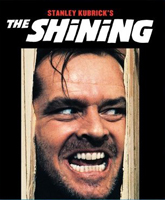

 .
.
 October 28
October 28